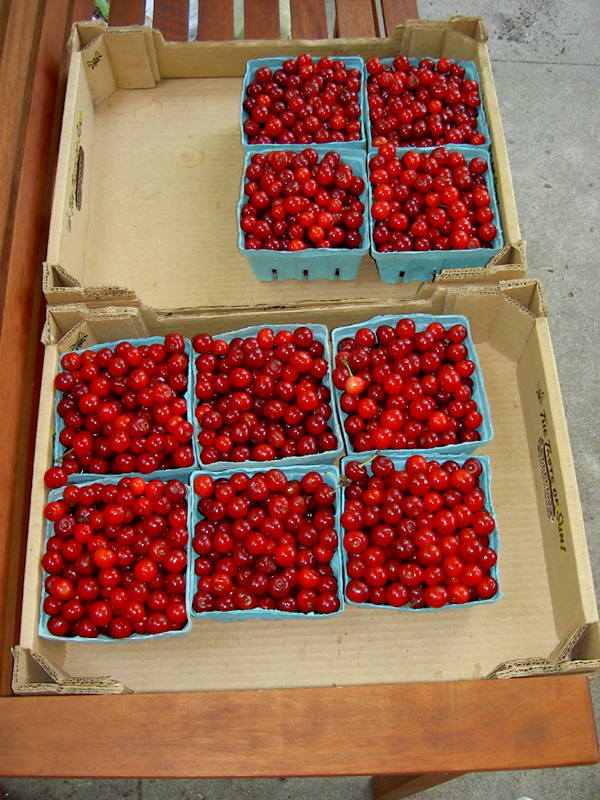Our CSA is swinging into full summer gear, and we are overflowing with potatoes, basil, tomatoes, a variety of cucumbers, and two kinds of squash. To be fair to our farmer who works hard not to overwhelm us with what he perceives to be the less desirable of the summer vegetables (squash), this week’s surplus results at least in part from my choice to buy a second box at a discounted rate. Showing up exactly when the farmer is delivering has a few advantages, and being offered an orphan box is one of them. So I have twice as many tomatoes and squashes as usual, and am trying to decide what to do with them.
Although many people complain about squash, I like them and will probably just continue to eat them as a regular part of meals. So far this summer we’ve had yellow squash sautéed with olive oil and tarragon (my personal favorite way) and yellow squash fritters. The fritters were an experiment, the result of combing through Simply In Season and studying all the recipes marked with ‘summer squash.’ The fritters were quite tasty, but consistently soft. We’re going to have them again tomorrow—three cups of shredded squash is less than I thought it would be, so I have some squash pre-grated and ready to go—and I’m hopeful that smaller and thinner will lead to a crispier outcome. I’m also tempted by a pickle recipe that uses yellow squash, but not terribly motivated to hover over a pot of boiling water again so soon. Maybe later in the summer if we have another big yellow squash week. In the meantime, the green and white courge will go into muffins, and we’ll munch our way through the variety of cucumbers.
On the tomato front, I have a row of smallish red tomatoes lined up on the windowsill, two pints of cherry tomatoes in the fridge, and two large Cherokee Purples ready for eating. I’m thinking I’ll just stew and freeze the red ones, despite their suitability for sandwiches, which will save me the trouble of figuring out an actual dish to make with them once cooked. Freezer space is now at a premium, however, which means that recipes involving chicken stock need to start appearing on the menu forthwith. Not to mention that the actual chicken needs to be thawed and stewed, although that will do nothing to address the chicken stock surplus. It’s not exactly soup season, but I have some ideas involving rice and vegetables that could use some up.
We’re also getting a decent amount of lovely basil, but I’ve been too slow to use it and it’s quite wilted. It’s currently soaking in an ice water bath, which the internet assures me will revive it; I suspect that much of it has crossed the line from wilted to dried, so I’m unlikely to ‘revive’ enough for the pesto I was hoping to make. We did use the lovely lemon basil from the folks we know in Frederick for pesto last week, and I’m sure there will be more to come. I just hate to see it go to waste. Speaking of the folks we know in Frederick, they sent us home with some delicious selections from their garden. So far we’ve had dragon tongue beans and escarole, and are looking forward to the radicchio, which will be likely just sautéed as a side for salmon, and cabbage, which I’m going to make into Sweet and Sour Cabbage even though it’s white rather than red.
Not only is this making me hungry, it’s reminding me that there is a lot of chopping, dicing, stewing, sautéeing and baking to be done in the kitchen. Prepare for winter, indeed.
